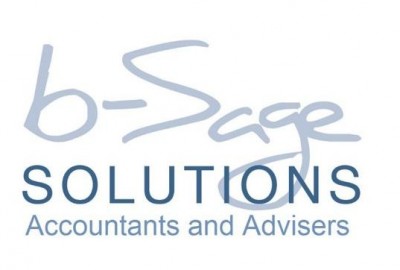Tax Update June 2017
Written and accurate as at: Jun 07, 2017 Current Stats & Facts

An update on the latest tax changes and other compliance matters ...
ATO data regarding Super Guarantee non-compliance
Editor: The ATO has provided some information about Superannuation Guarantee (SG) non-compliance in its recent submission to a Senate inquiry into the impact of the non-payment of the Superannuation Guarantee.
In addition to marketing and education activities to re-enforce the need for employers to meet their SG obligations, the ATO conducts audits and reviews to ascertain SG non-compliance, with 70% of cases stemming from employee notifications (the remaining 30% of cases are actioned from ATO-initiated strategies).
On average, the ATO receives reports from employees which relate to approximately 15,000 employers each year, although the ATO finds that nearly 30% of these employers have in fact paid the required SG to their employee.
However, an SG shortfall is identified in the remaining 10,000 cases (this represents approximately 1% of the estimated 880,000 employers who make SG payments).
The top four industries from which reports are received by the ATO are from:
Accommodation and Food Services;
Construction;
Manufacturing; and
Retail Trade.
These four industries represent approximately 50% of the audits and reviews undertaken.
The ATO also noted that the proposed Single Touch Payroll ('STP') will help overcome certain limitations in the data currently provided to the ATO (as well as simplify taxation and superannuation interactions for employers, by aligning the reporting and payment of PAYG withholding and SG with a business’s natural process of paying their employees).
Use of STP is mandated for businesses with 20 or more employees from 1 July 2018, and a pilot program will be undertaken in 2017 to identify the nature of STP benefits for small businesses.
Ride-sourcing is 'taxi travel'
In a recent case, the Federal Court has agreed with the ATO that 'ride-sourcing' (such as that provided using Uber) is 'taxi travel' within the meaning of the GST law.
The ATO has advised people who are taking up ride-sourcing to earn income should:
keep records;
have an Australian business number (ABN);
register for GST, regardless of how much they earn, and pay GST on the full fare received from passengers for each trip they provide;
lodge activity statements; and
include income from ride-sourcing in their income tax returns.
Drivers are also entitled to claim income tax deductions and GST credits (for GST paid) on expenses apportioned to the ride-sourcing services they have supplied.
The ATO warns that they can match people who provide ride-sourcing through data-matching, and will continue to write to them to explain their tax obligations.
Making 'intangible' capital improvements to pre-CGT assets
The ATO has confirmed that, if intangible capital improvements are made to a pre-CGT asset, they can be a 'separate CGT asset' from that pre-CGT asset if the relevant requirements are satisfied.
Editor: The result of this is that, while the disposal of the pre-CGT asset itself will be exempt from CGT, the improvements which are treated as a separate, post-CGT asset could still give rise to CGT.
Example
A farmer, holding pre-CGT land, obtains council approval to rezone and subdivide the land.
Those improvements may be separate CGT assets from the land, so if the land is sold with those improvements (the council approval), there may be some CGT (even though the land itself is exempt).
No overtime meal allowance, no overtime meal deduction
An employee construction project manager/supervisor was denied deductions for overtime meal expenses, as he was not paid an overtime meal allowance under an industrial agreement (award).
The taxpayer often worked at nights and on weekends during the relevant income years, and so additional amounts were negotiated and ‘rolled into’ his salary to cover the fact that he was expected to work additional hours, and also to cover any out-of-pocket expenses associated with such overtime.
However, the taxpayer’s salary was not paid under an award, which was simply used as a starting point in annual remuneration negotiations (and he was paid the same amount each week, regardless of hours worked or expenses incurred).
Therefore, the AAT agreed with the ATO, finding that the taxpayer had received no overtime meal allowance under the relevant industrial award.
As no deduction is claimable under the income tax law for overtime meal expenses unless an appropriate award overtime meal allowance is paid, the Tribunal swiftly dismissed the taxpayer’s appeal, and also affirmed the 25% administrative penalty.
Reduction in FBT rate from 1 April 2017
In conjunction with the introduction of the temporary budget repair levy (of 2%, payable by high income earners), the FBT rate was also increased from 47% to 49% for the 2016 and 2017 FBT years.
However, the FBT rate will revert back to 47% from 1 April 2017.
Editor: This means there will be a discrepancy between the FBT rate and the effective income tax rate for high income earners from 1 April 2017 until 30 June 2017.
This means that any such high-income earners that genuinely and effectively salary sacrifice relevant fringe benefits (e.g., expense payment fringe benefits, such as school fees or residential rent) during that period, so long as their employer is happy to assist, could basically reduce the tax payable on that income by 2%.
Lump sum payments received by healthcare practitioners
The ATO must be concerned about healthcare practitioners receiving lump sums and treating them as capital payments, as they have released a detailed fact sheet setting out what they expect to see in such situations.
If a healthcare practitioner (such as a doctor, dentist, physical therapist, radiologist or pharmacist) gets a lump sum payment from a healthcare centre operator, according to the ATO "it's probably not a capital gain. It's more likely to be ordinary income".
Specifically, the lump sum will typically be ordinary income of the practitioner for providing services to their patients from the healthcare centre.
Importantly, the mere fact the payment is a one-off lump sum, or expressed to be principally consideration for the restraint imposed, for the goodwill or for the other terms or conditions, does not define it as having the character of a capital receipt.
Editor: If you think this may affect you, we can help you work out what you need to do.
Tax officers "hit the streets" to "help small businesses"
The ATO is visiting more than 400 businesses across Perth and Canberra this month as part of a campaign to "help small businesses stay on top of their tax affairs".
Assistant Commissioner Tom Wheeler said: “Our officers will be visiting restaurants and cafés, hair and beauty and other small businesses in Perth and Canberra to make sure their registration details are up to date. These industries are on our radar because they have ready access to cash, and this is a major risk indicator.”
“We then work to protect honest businesses from unfair competition by taking action against those who do the wrong thing.”
The industries they are visiting have some of the highest rates of concerns reported to the ATO from across the country. If you are ever contacted directly by the Tax Office ask them to contact us first.
Planned changes to GST on low value imported goods
From 1 July 2017, overseas clients with an Australian turnover of $75,000 or more will need to register for, collect and pay GST on goods up to $1,000 that they sell to consumers in Australia.
If Australian clients are registered for GST and buy low value imported goods for their business from overseas, they will need to supply their ABN at the time of purchase so they won't be charged GST.
If the Australian business is not registered for GST, they will be treated as a consumer and unable to recover the GST charged by the overseas business.
Company disallowed $25 million of carried forward tax losses
A lack of supporting evidence has led to a company failing to prove it was entitled to claim deductions for tax losses (totalling $25 million) the company incurred for a property development, most notably during the 1990 to 1995 income years.
The company then claimed these tax losses as deductions on its income tax returns for the 1996 to 2003 income years.
The ATO disallowed the deductions because the company was unable to satisfy either of the tests that companies must satisfy to successfully claim losses incurred in prior years (being the 'Continuity of Ownership Test' and the 'Same Business Test’), and the AAT agreed with the ATO.
This was basically because the shares in the company could not be traced to the same shareholders that owned shares in some of the loss years. Further, there were periods of uncertain ownership positions during the relevant timeframe, which meant the AAT could not conclude a 'continuity of ownership' had been established in some cases. Also, the business has changed in the 1996 income year from property development to investing in units in a trust.
Editor: It is important to remember that the burden of proving an ATO assessment is excessive rests with the taxpayer.
Although this burden may prove difficult in cases such as this (i.e., the first claimed loss year was 1990), the AAT noted that a taxpayer has the obligation to make good its case on some “satisfactory basis other than speculation, guesswork or corner-cutting”.
Super changes may require action by 30 June 2017!
Due to the introduction of the new 'transfer balance cap' from 1 July 2017, super fund members with pension balances (in 'retirement phase') exceeding $1.6 million will need to partially commute one or more of their pensions to avoid the imposition of excess transfer balance tax.
In addition, members in receipt of a transition to retirement income stream ('TRIS') will lose the pension exemption from 1 July 2017.
This means that the future disposal of any assets currently supporting such pensions will potentially generate a higher taxable capital gain (even though the disposal of the asset prior to 1 July 2017 could be fully or partially tax-free, depending on whether the asset is a segregated or unsegregated asset).
Fortunately, to avoid funds selling off assets before 1 July 2017, transitional provisions have been introduced to allow super funds to apply CGT relief in certain situations.
Although the choice to apply the CGT relief can be made up until the day the super fund is required to lodge its 2017 tax return, in many cases, action must be taken on or before 30 June 2017 for the fund to even be eligible to make that choice. In particular, funds calculating exempt pension income using the segregated assets method will generally need at least a partial commutation of the pension.
Editor: Please contact our office if you need any information regarding the super reforms, including what needs to be done to obtain CGT relief (if necessary), whether a TRIS should be commuted to accumulation phase or continued into the 2018 year, and how the new contribution rules will affect contributions in both the current and future years.
Company tax cuts pass the Senate with amendments
Editor: After a marathon few days of extended sittings (the last before the Federal Budget in May), the Government finally managed to get its company tax cuts through the Senate, but it was not without compromise.
The following outlines the final changes to the law, as passed by the Senate, including a recap of which of the original proposals remained intact and also which ones were changed.
Increase to the SBE turnover threshold
As was previously announced, the Small Business Entity (‘SBE’) definition has changed with respect to the turnover eligibility requirement.
The aggregated turnover threshold has increased from $2 million to $10 million with effect from 1 July 2016 (i.e., the current, 2017, income year).
Note that, whilst the increase in this threshold will expand access to most SBE concessions (e.g., simplified depreciation), this change will not apply with respect to:
the Small Business Income Tax Offset (a special $5 million threshold will apply when determining eligibility for this tax offset);
and
the Small Business CGT concessions (the aggregated turnover threshold to access these concessions will remain at $2 million, although taxpayers may still seek to satisfy the $6 million maximum net assets test as an alternative method of obtaining access to these concessions).
Reduction in the corporate tax rate
The most significant difference between the Government’s original proposals and what was finally passed by Parliament was in relation to the reduction in the corporate tax rate.
Although the corporate tax rate will still decrease to 25% (by the 2027 income year, as originally proposed), access to the reduced corporate tax rate will be restricted to corporate entities that carry on business with an aggregated turnover of less than $50 million (from the 2019 income year).
The following table provides a summary of how the progressive reduction in the corporate tax rate will apply.
IncomeYear Aggregated turnover Company tax rate
2016 < $2 million 28.5%
2017 <$10 million 27.5%
2018 <$25 million
2019
2020
2021 27.5%
2022
2023 <$50 million
2024
2025 27%
2026 26%
2027 & later 25%
Editor: As noted above, corporate entities with at least $50 million aggregated turnover or, more importantly, companies that do not carry on business (e.g., passive investment companies and ‘bucket companies’) will continue to have a corporate tax rate of 30%.
Changes to the franking of dividends
Prior to this income year, companies that paid tax on their taxable income at 28.5% could still pass on franking credits to their shareholders at a rate of 30%, subject to there being available franking credits.
However, with effect from 1 July 2016 (i.e., this income year), the maximum franking credit that can be allocated to a frankable distribution paid by a company will be based on the tax rate that is applicable to the company.
Editor: Please contact this office if you would like to know how these changes will affect your business specifically.
Costs of travelling in relation to the preparation of tax returns
The ATO has released a Taxation Determination confirming that the costs of travelling to have a tax return prepared by a “recognised tax adviser” are deductible.
In particular, a taxpayer can claim a deduction for the cost of managing their tax affairs.
However, apportionment may be required to the extent that the travel relates to another non-incidental purpose.
Example – Full travel expenses deductible
Maisie and John, who are partners in a sheep station business located near Broken Hill, travel to Adelaide for the sole purpose of meeting with their tax agent to finalise the preparation of their partnership tax return.
They stay overnight at a hotel, meet with their tax agent the next day and fly back to Broken Hill that night.
The full cost of the trip, including taxi fares, meals and accommodation, is deductible.
Example – Apportionment required
Julian is a sole trader who carries on an art gallery business in Oatlands.
He travels to Hobart for two days to attend a friend's birthday party and to meet his tax agent to prepare his tax return, staying one night at a hotel.
Because the travel was undertaken equally for the preparation of his tax return and a private purpose, Julian must reasonably apportion these costs.
In the circumstances, it is reasonable that half of the total costs of travelling to Hobart, accommodation, meals, and any other incidental costs are deductible.
Editor: Although the ATO's Determination directly considers the treatment of travel costs associated with the preparation of an income tax return, the analysis should also apply where a taxpayer is travelling to see their tax agent in relation to the preparation of a BAS, or another tax related matter.













